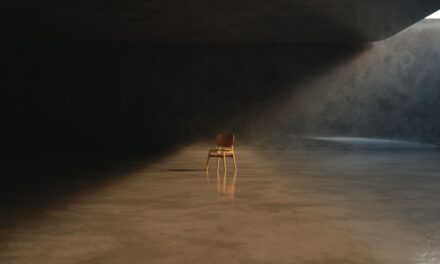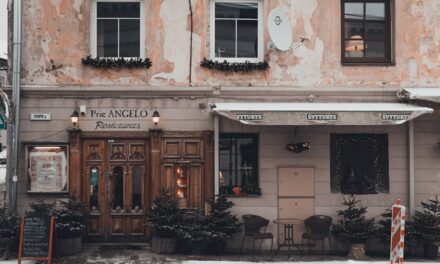Luis de Vargas was born in 1502 in the vibrant city of Seville, a hub of cultural and artistic activity during the Spanish Renaissance. His early life remains somewhat shrouded in mystery, but it is widely believed that he was the son of a painter, which likely influenced his path towards the arts. Growing up in a city that was a melting pot of ideas, Vargas was exposed to a variety of artistic styles and techniques from an early age.
The rich tapestry of influences surrounding him, from Moorish architecture to the burgeoning Renaissance ideals, would later manifest in his own unique artistic voice. As a young man, Vargas likely received formal training in painting, although specific details about his education are scarce. It is speculated that he may have studied under prominent artists of the time, absorbing their techniques and philosophies.
The socio-political climate of Spain during this period, marked by the Reconquista and the subsequent rise of Catholicism, also played a significant role in shaping his worldview and artistic direction. This environment fostered a deep appreciation for religious themes, which would become a hallmark of his work.
Summary
- Luis de Vargas was born in Seville, Spain, in 1502, and was raised in a devout Catholic household, which greatly influenced his artistic development.
- Vargas was heavily inspired by the works of Italian Renaissance artists such as Michelangelo and Raphael, as well as the Spanish painter, Alonso Cano.
- Vargas’ artistic style evolved from Mannerism to a more naturalistic and emotional approach, reflecting his deep religious beliefs and the influence of the Counter-Reformation.
- Notable works by Vargas include “The Last Supper” and “The Immaculate Conception,” which are significant for their emotional intensity and religious symbolism.
- Vargas played a crucial role in the Spanish Renaissance art movement, contributing to the revival of religious art and influencing future generations of artists in Spain and beyond.
Influence and inspirations in Vargas’ work
Vargas’ artistic oeuvre was profoundly influenced by the prevailing currents of the Renaissance, particularly the humanist ideals that emphasised the importance of individual experience and emotion. He drew inspiration from the works of Italian masters such as Raphael and Michelangelo, whose compositions and use of colour left an indelible mark on his style. The interplay of light and shadow, as well as the anatomical precision evident in these artists’ works, can be seen echoed in Vargas’ paintings, where he sought to capture both beauty and spirituality.
In addition to Italian influences, Vargas was also inspired by the rich artistic traditions of Spain itself. The fusion of Gothic and Mudejar styles in Seville provided a unique backdrop for his development as an artist. The vibrant colours and intricate patterns characteristic of Spanish art during this period can be observed in his works, where he often employed bold hues to convey emotion and depth.
Furthermore, the religious fervour that permeated Spanish society during the Renaissance served as a significant source of inspiration for Vargas, leading him to explore themes of faith, devotion, and the divine in his art.
The evolution of Vargas’ artistic style
Throughout his career, Luis de Vargas experienced a notable evolution in his artistic style, transitioning from the more traditional Gothic influences of his early works to a distinctly Renaissance approach characterised by naturalism and emotional expression. His initial pieces often reflected the rigid forms and flat perspectives typical of Gothic art; however, as he matured as an artist, he began to embrace the principles of perspective and proportion that were gaining prominence during the Renaissance. This shift is particularly evident in his later works, where he demonstrated a mastery of chiaroscuro—the technique of using strong contrasts between light and dark to create a sense of volume and depth.
Vargas’ ability to depict human figures with a sense of realism and emotional resonance marked a significant departure from earlier styles. His figures became more dynamic and expressive, reflecting the humanist ideals that celebrated individual experience. This evolution not only showcased his technical prowess but also highlighted his growing understanding of the emotional power that art could wield.
Notable works and their significance
Among Luis de Vargas’ most notable works is “The Virgin with Child,” a piece that exemplifies his ability to blend religious themes with emotional depth. In this painting, Vargas captures the tenderness between mother and child through soft lines and warm colours, inviting viewers to contemplate the divine nature of their relationship. The work is significant not only for its aesthetic qualities but also for its reflection of the spiritual climate of 16th-century Spain, where such depictions were intended to inspire devotion among the faithful.
Another important work is “The Adoration of the Magi,” which showcases Vargas’ skill in composition and narrative storytelling. In this piece, he masterfully arranges multiple figures within a single frame, creating a sense of movement and interaction among them. The detailed expressions on each face convey a range of emotions—from awe to reverence—allowing viewers to engage with the scene on a personal level.
This work is significant as it illustrates Vargas’ ability to merge technical skill with profound thematic content, making it a quintessential example of his artistic vision.
Vargas’ impact on the Spanish Renaissance art movement
Luis de Vargas played a pivotal role in shaping the Spanish Renaissance art movement, particularly within the context of Seville’s burgeoning artistic community. His innovative approach to composition and colour not only set him apart from his contemporaries but also influenced a generation of artists who followed in his footsteps. By integrating elements from both Italian Renaissance art and traditional Spanish styles, Vargas created a unique synthesis that resonated deeply with local audiences.
His contributions extended beyond mere aesthetics; Vargas was instrumental in promoting religious themes that aligned with the Counter-Reformation ideals emerging during this period. His works often served as visual narratives that reinforced Catholic doctrine while simultaneously appealing to the emotional sensibilities of viewers. This dual focus on spirituality and artistry helped solidify his position as a key figure within the Spanish Renaissance, paving the way for future artists to explore similar themes in their own work.
The role of religion in Vargas’ art
Religion was not merely a backdrop for Luis de Vargas; it was central to his artistic identity. Living during a time when Spain was grappling with issues of faith and identity following the Reconquista, Vargas used his art as a means to explore and express complex theological concepts. His paintings often depict biblical scenes infused with emotional depth, inviting viewers to engage with their faith on a more personal level.
In works such as “The Last Supper,” Vargas captures not only the narrative essence of the event but also its spiritual significance. The careful arrangement of figures and use of light serve to highlight moments of divine revelation and human connection. Through these depictions, Vargas sought to inspire contemplation and devotion among his audience, reinforcing the importance of faith in everyday life.
His ability to convey profound religious themes through visual storytelling remains one of the defining characteristics of his oeuvre.
Vargas’ technique and use of materials
Luis de Vargas was known for his meticulous technique and innovative use of materials, which contributed significantly to the overall impact of his work. He often employed oil paints on canvas—a medium that allowed for greater flexibility in blending colours and achieving intricate details. This choice enabled him to create luminous effects that enhanced the emotional resonance of his subjects.
In addition to oil paints, Vargas was skilled in the use of tempera—a technique that involves mixing pigments with egg yolk or other binding agents. This method allowed him to achieve vibrant colours with a matte finish, lending an ethereal quality to his works. His attention to detail extended beyond colour; he was also adept at rendering textures, whether it be the softness of fabric or the smoothness of skin.
This technical prowess not only showcased his artistic talent but also elevated the overall quality of Spanish painting during this period.
Vargas’ contributions to the Sevillian School of painting
As a prominent figure within the Sevillian School of painting, Luis de Vargas made significant contributions that helped define its character during the Renaissance. His innovative approach to composition and colour set new standards for artists in Seville, encouraging them to explore themes that resonated with local audiences while also embracing broader European influences. Vargas’ emphasis on emotional expression and narrative depth became hallmarks of Sevillian painting, inspiring subsequent generations to adopt similar techniques.
His ability to merge traditional Spanish elements with Renaissance ideals created a distinctive style that would influence artists such as Francisco de Zurbarán and Murillo. By fostering an environment where creativity could flourish, Vargas played an essential role in establishing Seville as a vital centre for artistic innovation during this transformative period.
Vargas’ legacy and influence on future artists
The legacy of Luis de Vargas extends far beyond his own lifetime; his influence can be traced through subsequent generations of artists who sought to emulate his style and thematic concerns. His innovative techniques and emotional depth laid the groundwork for future developments in Spanish painting, particularly within the context of Baroque art. Artists such as Diego Velázquez and Francisco Goya drew inspiration from Vargas’ ability to convey complex emotions through visual storytelling.
The emphasis on realism and human experience that characterised Vargas’ work became foundational principles for many who followed him. As such, he is often regarded as a precursor to later movements that would further explore these themes, solidifying his place within the pantheon of great Spanish artists.
The controversy and criticism surrounding Vargas’ work
Despite his significant contributions to art, Luis de Vargas was not without controversy or criticism during his career. Some contemporaries viewed his departure from traditional styles as overly ambitious or even misguided. Critics argued that his embrace of Renaissance ideals sometimes overshadowed the rich cultural heritage inherent in Spanish art.
Moreover, certain religious authorities expressed concern over some interpretations present in his works, fearing they might lead viewers astray from orthodox beliefs. These tensions reflect broader societal debates occurring during this period regarding faith, identity, and artistic expression. Nevertheless, despite facing criticism, Vargas remained steadfast in his commitment to exploring complex themes through his art—a testament to both his resilience as an artist and his unwavering belief in the power of visual storytelling.
Where to view Vargas’ paintings and exhibitions
For those interested in experiencing Luis de Vargas’ remarkable body of work firsthand, several institutions house notable examples of his paintings. The Museo de Bellas Artes in Seville boasts an impressive collection that includes some of his most celebrated pieces, allowing visitors to appreciate their intricate details up close. This museum serves as a vital repository for Spanish art history and offers insights into Vargas’ contributions within this context.
Additionally, temporary exhibitions featuring Vargas’ work occasionally occur at various galleries across Spain and beyond. These exhibitions often provide opportunities for scholars and enthusiasts alike to engage with his art through lectures, guided tours, and discussions about its significance within both historical and contemporary frameworks. As interest in Renaissance art continues to grow globally, so too does recognition for artists like Luis de Vargas—ensuring that their legacies endure for future generations to appreciate.
For those interested in learning more about the techniques used by artist Luis de Vargas, a helpful article to check out is “Advanced Pencil Drawing: Hyperrealism and Detail”. This article delves into the intricate process of creating hyperrealistic artwork, which is a style that Vargas is known for. By exploring the techniques discussed in this article, aspiring artists can gain a deeper understanding of the level of skill and precision required to achieve such realistic results in their own work.



